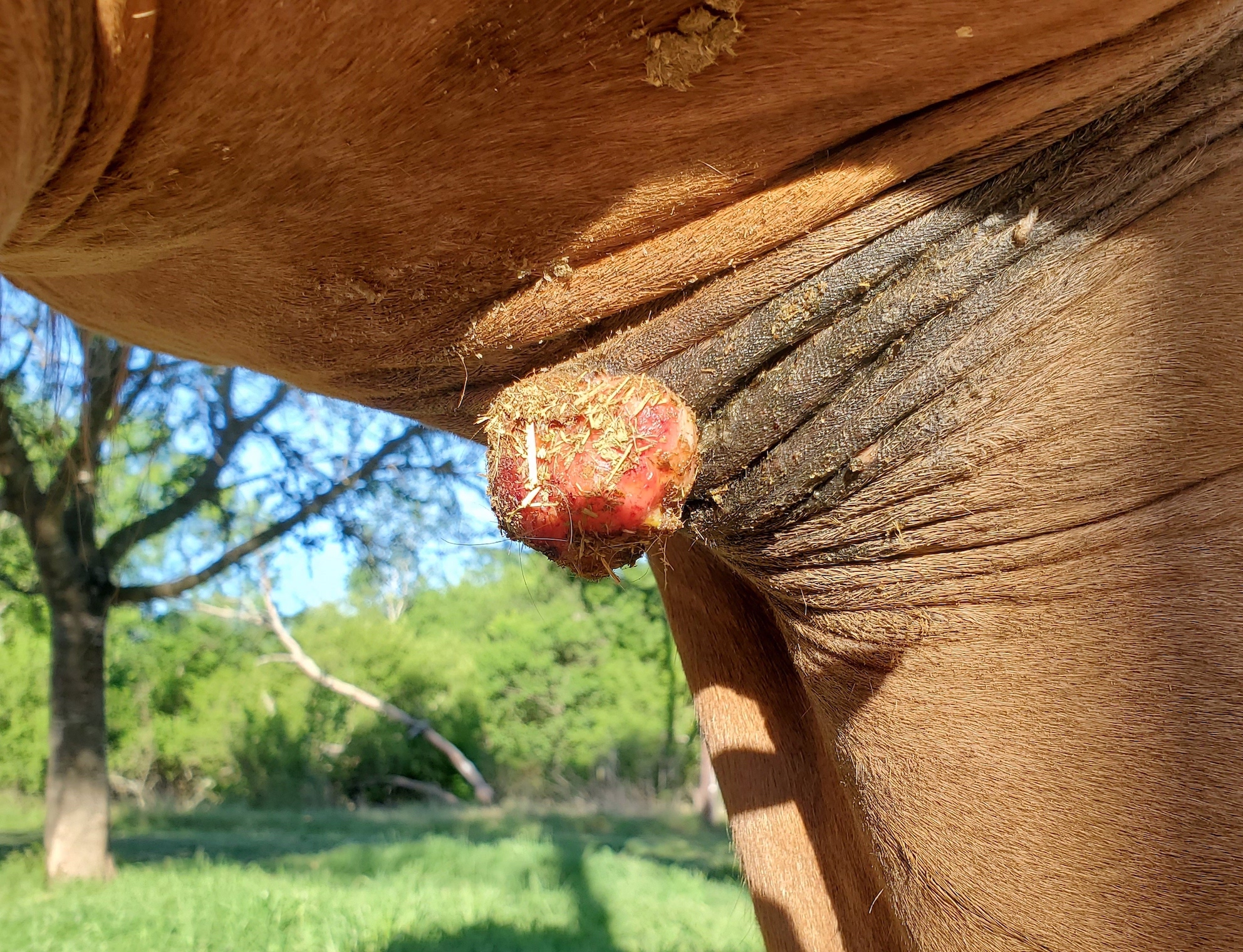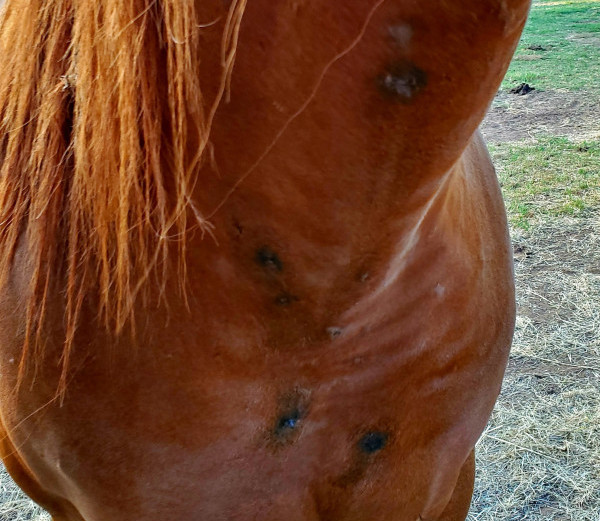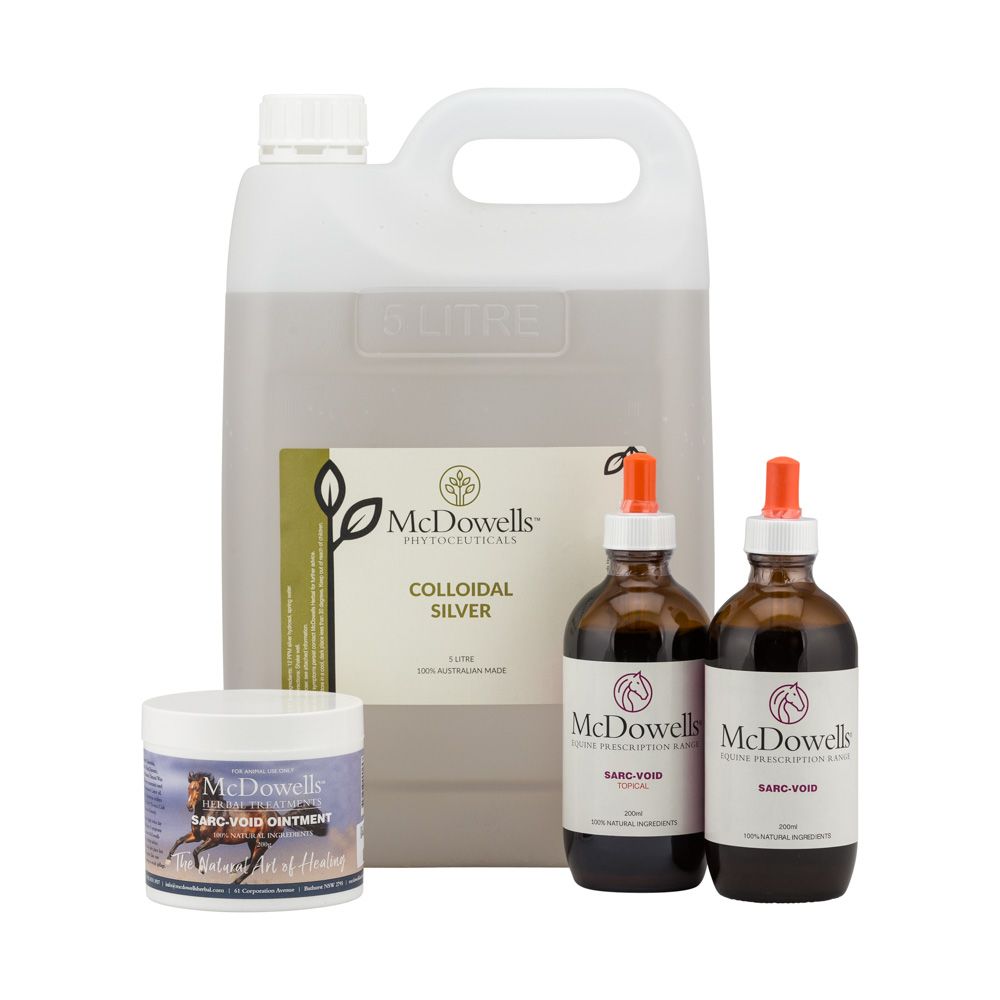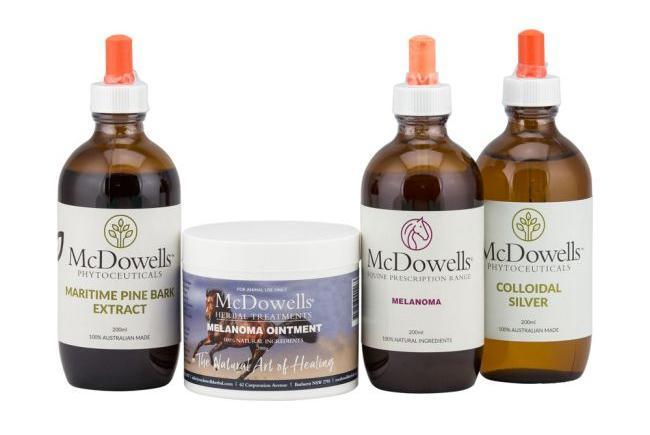The three most common type of skin tumours in horses are sarcoids, squamous-cell carcinoma and melanomas. Robust immune systems routinely eliminate infective and metabolic waste as part of a healthy system. A system that is overloaded with inflammation, infection or metabolic waste has a much harder time recovering...
Herbs have been traditionally used to stimulate the horse’s own natural elimination, which may help to clear these naturally occurring metabolites, thereby improving the immune system's response. Herbally, McDowells formulation work with the systems of the body that created the condition in the first place.
The key elements of cancer prevention;
1. Food/Nutrition - alkalizing and anti-inflammation diets using herbs, correct pastures and removing pre-prepared processed foods. High GI diets are especially problematic for horses with cancers. See our diet recommendations.
2. Daily exercise and low stress environments
3. Environmental detoxification and systemic detoxification - through specific herbal therapy and chelation therapy
4. Anti bacterial/anti microbial therapy/anti parasitic therapy – through specific herbal therapy
5. Immunity boosting and organ support- through specific herbal therapy
The journey of healing can seem long and not very clear cut. Sometimes it can appear to be going two steps forward and one step back. It is important to continue with the program and the products for the recommended period of time. These conditions did not develop in a week; they won't disappear in a week!
Sarcoids
Sarcoids are the most common skin tumour in horses and ponies. A sarcoid is a growth on the skin which is thought to be caused by a virus. It grows most often on the inner thighs but may occur on any other part of the body.
They can look like simple warts but they are considered a form of skin cancer. They can be hard to see and can appear as tiny bumps or confused with other skin conditions but if they enlarge they can become harder to treat and remove. They can be hidden in hair or appear as a flat sore with a dry and flaky appearance.
Our program is designed to help detox and the aim is to support the immune system in fighting the virus. Sarcoids are tricky and like SCC, take many months to get on top of. Reports from clients vary from a quick resolution (within the 15 week initial prescribed time-frame) to slow resolution in more difficult cases, often taking 6 months to see the desired outcome.
 A large sarcoid
A large sarcoid
Squamous Cell Carcinoma
Squamous cell carcinoma is the 2nd most common tumour occurring in horses. Common locations of this cancer include the skin, genital area and stomach but up to fifty percent of cases involve the eye or where skin meets mucous membranes.
SCC often appears as a tumour or ulcer on the skin. It can be differentiated from less serious conditions by its irritated or bleeding appearance. It is commonly found around the eye or in the eye itself, on the prepuce or penis and around the vulva. When metastasis occurs, local lymph nodes are generally the affected sites.
The cause of squamous cell carcinoma, involving the ocular structures in horses, is not entirely known but its' more common in horses with pink skins. Similar to that occurring in people, the UV in sunlight may be the cause. Horses with white skin seem to be more susceptible to SCC. Other factors may include viruses, genetics and compromised immune systems.
If SCC is detected early, the outlook is better. If left it can metastasize and be fatal.
We have many testimonials helping owners manage this condition – many reporting complete reversal of the condition.
Melanomas
There are four types of melanocytic tumours - Melanocytic nevi, Dermal melanoma, Dermal melanomatosis and Anaplastic melanoma.
They can be benign or malignant. The tumours can arise from either deeper or surface layers of skin or the fibrous or fatty tissues.They occur most commonly on the ears and noses, inner legs, and the anus and vulva of horses. They appear as groups of firm, dark lumps or as solitary black bumps.
Most benign tumours grow slowly, are well defined and do not appear to be inflamed. Malignant ones, on the other hands, seem to grow rapidly, ulcerate and sometimes invade adjacent tissue. Studies show that more than 80% of gray horses over the age of 15 will develop at least one melanoma tumor during its lifetime(1).
CLICK HERE FOR A FREE ONLINE CONSULTATION
References
(1) Sarcoids And Melanomas
https://thehorse.com/14472/sarcoids-and-melanoma/
(2) Equine Melanoma - It’s not just black and white! Bria Tannler, DVM Student Edited by Dr. Sandra
https://www.vet.purdue.edu/esmc/files/documents/EHUsummer2013singlepg.pdf
(3) MacGillivray KC, Sweeney RW, Del Piero F. Metastatic Melanoma in Horses.
J Vet Intern Med. 2002; 16:452-456.
(4) Valentine, BA. Equine Melanocytic Tumors: A Retrospective Study of 53 Horses
(1988-1991). J Vet Intern Med. 1995: 9(5): 291-297.
(5) Goetz TE, Ogilvie GK, Keegan KG, Johnson PJ. Cimetidine for treatment of
melanomas in three horses. J Am Vet Med Assoc. 1990 Feb 1;196(3):449-52.
(6) Rowe EL, Sullins KE. Excision as treatment of dermal melanomatosis in horses:
11 cases (1994-2000). J Am Vet Med Assoc. 2004; 225; 94-96.





